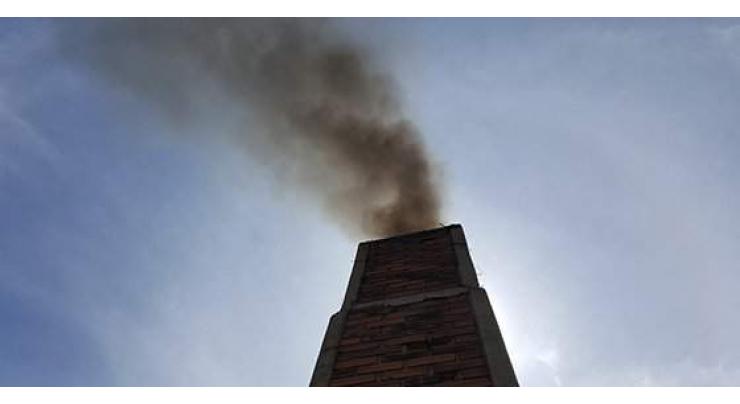
Tracking COVID-19: Emissions Must Be Dealt With Strict Measures
Fida Hussnain (@fidahassanain) Published March 28, 2020 | 03:42 PM

Like other parts of the globe, Pakistan too has halted social, economic and political activities to reduce the risk of coronavirus spread.
LAHORE: (UrduPoint/UrduPoint / Pakistan Point News-March 28th, 2020) A noticeable decline was witnessed in global emission level of greenhouse gases due to strict initiatives launched by the governments of corona affected countries to halt the spread of COVID-19 as safety measures for public health.
In order to break the chain of coronavirus, people have been restricted to their abodes. Like other parts of the globe, Pakistan too has halted social, economic and political activities to reduce the risk of coronavirus spread.
According to Dr. Saeed Ahmad Ali—the write who works with Associated Press of Pakistan (APP), strict measures have been exercised by locking down the routine activities such as public gatherings and transport operations for public safety. He said new coronavirus cases were reported on daily basis in Punjab, Baluchistan, Sindh, Khyber-Pakhtunkhwa and Gilgit-Baltistan.
The virus first emerged in Wuhan, China which later gripped some other parts of the country. The government has locked down the entire city and established various quarantines to accommodate around 12 million people.
After getting the situation from bad to worse, the movement of around 60 million people turned stagnant while the cities have shown a deserted look.
Talking to APP, an official of Pakistan Meteorological Department said that the reduced transport activities in major cities of the country had positive impact on environment and air during the last week.
Similarly, the United States Space Agency, NASA’s Earth Observatory has recently released satellite images which clearly show that the environmental pollution has been declined drastically due to the non-movement of motor vehicles.
These pictures also show a reduction in the levels of greenhouse gases including Carbon Dioxide (CO2) particularly Nitrogen Dioxide (NO2) in the environment. These gases are emitted from motor vehicles, industrial structures and power plants.
In order to avoid the virus, industrial operations in the coronavirus hot spot regions have been halted and travel restrictions were imposed in China, Europe and USA which had helped in rectifying quality of air.
The recent research report submitted by a noted environmentalist Lauri Myllyvirta, working at the Centre for Research on Energy and Clean Air in Finland observed that the travel restrictions contributed to a 25 percent drop in China’s Carbon Dioxide (CO2) emissions during the last four weeks from Januray to February, 2020.
Sustainable Development policy Institute Environmental Expert Kashif Salik said that keeping in view the current scenario, a temporary reduction in gas emissions in 2020 should be encouraged globally; however, it should be adopted as a permanent behavior to put the emissions on a long-term decline.
“Hopefully the COVID-19 outbreak will bring changes which make societies more willing permanently, to act on the climate change crisis in the long run,” he said. However, it was pertinent that the drop in global emissions due to Coronavirus would have an impact on global economic activity, he added.
Owing to climate change impact and migration of different communities, the World Meteorological Organization(WMO) in its declaration has warned the nations that around 22-23 million people were displaced around the globe by extreme weather conditions in 2019, which was a clear increase as compare to 17.2 million migration, during the year 2018.
A anticipatory meeting of EU-China climate summit, which had to take place at the end of March 2020, ahead of UN’s next global climate meeting, has been postponed due to coronavirus outbreak. These events help draft governmental level agreements in advance of the UN meetings.
The UN global meeting ‘COP26’ conference is scheduled to take place in Glasgow in November, 2020. It is worth mentioning here that the COP26 conference is particularly critical, in a scenario that all signatory countries are supposed to present even more ambitious plans to cut greenhouse gas emissions than called for under the 2015 Paris Agreement.
According to a World Resource Institute (WRI) report, under 2015 Paris Agreement, only the Moldova, Suriname, Marshall Islands and Norway had presented such improvement plans to reduce global and local omissions.
Related Topics
Recent Stories

At least 10 people killed in Brazil fire: officials

Shahzaib Rind calls on Deputy Speaker Balochistan

Ahsan chairs 13th CPEC-JCC preparatory meeting, reviews arrangements for high-le ..

DC Tharparkar inaugurates anti-polio campaign

HDA Mehran workers demand salaries

Taxila police nab motorcycle lifter gang

Inter-university weightlifting championship kicks off at SAU

Walk held in a series of enrollment campaigns

Team from Gaza mediator Egypt arrives in Israel for truce talks

Kids murders: IHC orders psychiatric examination of mother

Health minister credits PML-N for advancements in organ transplantation

Court grants interim bail to Azam Swati in cyber crime case
More Stories From Blog
-

The Economic Challenges for the New Government
1 month ago -

How a Second Passport Can Enhance Your Travel and Business Opportunities
1 month ago -

Reading Minds
2 months ago -

Human Rights Situation in Pakistan: A Comprehensive Analysis
5 months ago -

Climate change poses imminent threat to global biodiversity
5 months ago -

Unprecedented floods in Pakistan
8 months ago
-

Sonia Ahmed's vision elevates Miss Pakistan to Global prominence
8 months ago -
Armed forces, intelligence agencies protecting country’s fabric from proxy wars: experts
11 months ago -

Lawmakers denounce strongly Indian nefarious move for Yasin Malik’s sentence
11 months ago -
Written in blood: a poignant story of our invincible warriors, martyrs
11 months ago -

Proportial voting in Pakistan
1 year ago -
Three Jewels fading from Lahore’s architectural crown
1 year ago








